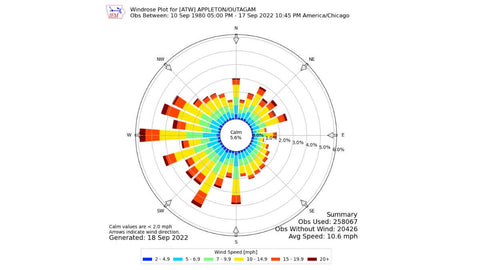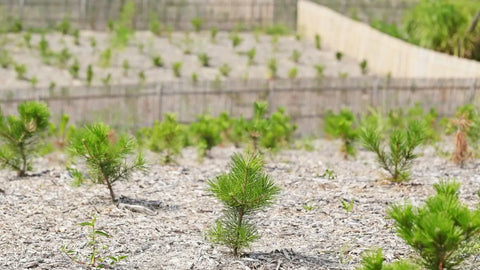Designing an Effective Windbreak for Your Land
Optimizing Your Land with Effective Windbreak Design
Creating an effective windbreak is crucial for maximizing the potential of your land. Whether you're protecting plants, people, or livestock, a well-designed windbreak can bring numerous benefits. Let's explore how to make the most of this natural barrier.
Identifying Prevailing Winds: The First Step
Understanding the direction of prevailing winds is essential. Tools like the "wind rose" graph can be incredibly helpful. For instance, in Green Bay, the prevailing winds are from the west and southwest. However, the impact of these winds can vary based on your location's climate. In colder areas, winds from the west and north are often more concerning. If you're unsure about your area's wind patterns, asking a neighbor can be a great start.

Design Essentials: Height and Density of Windbreaks
Designing a windbreak effectively can significantly improve the protection and productivity of your land. Let's dive into how the height and density of a windbreak can make all the difference.
The Impact of Height and Density on Windbreaks
Two critical factors determine how well a windbreak performs: its height and how densely the trees and shrubs are planted. A windbreak's height can create a shielded area extending 10 to 30 times its height downwind. So, a 30-foot tall windbreak can offer protection for a range from 300 to 900 feet. The density of the windbreak, or how close the plants are to each other, also plays a vital role.
Low Density Windbreaks (25% to 35% dense)
These windbreaks are ideal for disrupting wind flow and spreading out heavy snow. Though they're more open and less effective in reducing topsoil loss, they're great for farm fields. A low-density windbreak can cut wind speed by half right behind it, covering a substantial area.
Medium Density Windbreaks (40% to 60% dense)
Medium density windbreaks are effective in reducing wind speed and managing snowfall near the windbreak. They're particularly suited for farm fields and residential areas, offering a good balance of wind protection and airflow to prevent mildew. These windbreaks can reduce wind speed by up to 70% immediately behind them.
High Density Windbreaks (60% to 80% dense)
For those seeking maximum protection for homes or to reduce wind chill for people and animals, high-density windbreaks are the way to go. Comprising dense rows of trees, buildings, or solid fences, they can significantly reduce wind speeds. However, they might not be suitable for fields due to the potential for downdrafts and turbulence. These windbreaks can reduce wind speeds by 75% right behind them.
Remember, a very dense and wide windbreak might face issues like center die-off over time due to shading. More isn't always better when it comes to plant density in windbreaks.
By understanding and applying these principles of height and density, you can design a windbreak that not only shields your land but also enhances its environment and usability.
Choosing the Right Species for Your Windbreak
Selecting tree species suitable for your specific environment is crucial. Consider factors like local hardiness zones, soil types, moisture levels, and microclimate. In snow-prone areas, a mix of trees and shrubs with medium to high density works well. For dryer regions, opt for lower density with deciduous trees and shrubs.

Avoiding Tree Incompatibility in Your Windbreak
Finally, be mindful of tree incompatibility. Some trees, like black walnuts, produce compounds harmful to certain plants. Others may create an acidic soil environment or host diseases. Understanding these interactions is key to a successful windbreak.
By considering these factors, you can design a windbreak that not only protects your land but also enhances its overall health and productivity.





Leave a comment